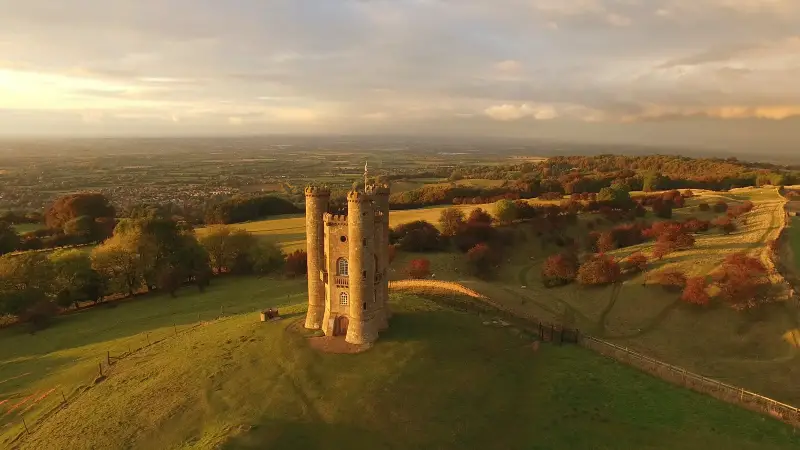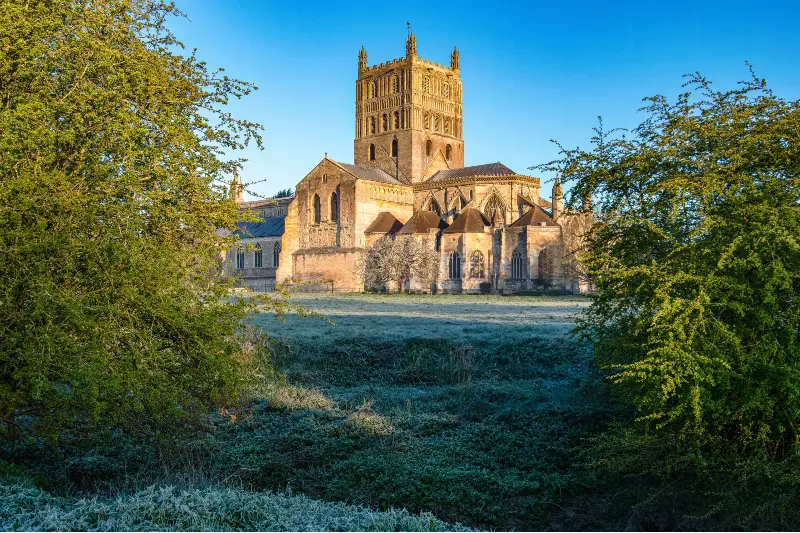The Cotswolds are some of the most stunning parts of England. It’s famous for its awe inspiring views of enchanting rolling hills and lush green countryside, with nothing but fresh air and the soothing sounds of nature. Aside from the endless scenic trails and picturesque villages, there are many fantastic sites to discover in the region.
Here are some of the most incredible historical sites to visit in the Cotswolds.

1. Sudeley Castle
Sudeley Castle lies in the heart of the stunning Cotswolds countryside and is a lovely place to visit, especially for families with kids. It has an adventure playground where kids can have fun after exploring the castle grounds. Built in the 15th Century, the Sudeley Castle used to house English monarchs like Edward IV, Henry VIII, Katherine Parr, and others. Whether you’re a history buff or appreciate fine architecture, you should check out the Sudeley Castle.
Set against the picturesque backdrop of Cotswold Hills, the castle grounds of Sudeley Castle are a fun place to stroll around. One of its key features is the Queen’s Garden, named after four Queens of England, Elizabeth I, Lady Jane Grey, Katherine Parr, and Anne Boleyn. With over eighty varieties of roses, the garden looks enchanting. Soak up the beauty of nature as you breathe in the sweet and spicy smell of roses.
Another highlight of the Sudeley Castle is the 1,000 Trials, Triumphs, & Treasures Exhibition, which highlights the crucial historical moments of the castle. Marvel at the extensive collection of valuable items, including rare objects, giving a glimpse into the lives of their owners.
2. Chedworth Roman Villa
Another attraction you should check out in the Cotswolds is the Chedworth Roman Villa, one of the largest and most well-decorated Roman villas discovered in Britain. Set in a tranquil setting with idyllic nature views and rich wildlife, the Chedworth Roman Villa is a fantastic place to relax and enjoy a scenic stroll. It also has a small museum housing a rare collection of artifacts discovered from the villa.
The history of Chedworth Roman Villa dates back to 120 AD when a basic house was constructed near the natural spring of Coln Valley. It originally has buildings on all three sides of the central courtyard. The south and west wings were rebuilt during the 3rd Century after they got damaged by fire, and it was not until the 4th Century that the villa was transformed into the opulent mansion that it is now.
During the time, Cirencester, which was then called Corinium Dobunnorum, was one of the largest Roman towns in the UK. Several other remains of Roman villas were uncovered in the Cotswold, which shows how significant the area was for the Romans.
3. Tewkesbury Abbey
While it’s possible to explore the Cotswolds independently, booking a tour is highly recommended to save you from all the hassles and stress that come with planning a trip. For instance, you will find some excellent things to do in Bath, such as tours to Stonehenge in the UK, which is an excellent way to discover the country’s historical sights. Another sight you should not miss while in the Cotswolds is the Tewkesbury Abbey, a magnificent abbey church that dates back to the early 12th Century.
Established by Robert FitzHamon, William the Conqueror’s second cousin, the Tewkesbury Abbey used to be a Benedictine monastery transformed into a parish church. The abbey was the sight of the horrific Battle of Tewkesbury in 1471, which took place at the Abbey gates. When the defeated soldiers took refuge inside the abbey, King Edward IV’s men took the opportunity to slaughter them. You’ll find a dreadful reminder of this event at the sacristy door, where the inner surface is inset with metal taken from the armour salvaged after the battle.
But not everything about the abbey is gloomy. You’ll find a lovely organ believed to be the UK’s oldest organ still in regular use. It’s named Milton Organ due to its supposed association with the poet John Milton.

4. Avebury Ring
The UK is famous for its stone henges, and you’ll also find one in the Cotswolds, the Avebury. It’s a complex of henge and stone circles dating back to the Neolithic Age, built and altered for several centuries.
During the Middle Ages, the stone henges were linked to pagan and devil worship. Many of these have been buried and destroyed. The Avebury is one of the largest and most complex of all the Neolithic henge monuments. It is part of the remarkable complex of Neolithic and Bronze Age ceremonial sites that seemingly formed a massive sacred landscape.
You will also find the Alexander Keiller Museum nearby, which displays notable findings from the Avebury complex. The Avebury and its surroundings are considered a World Heritage Site just like the Stonehenge and is being managed by The National Trust on behalf of English Heritage. These two organisations shoulder the cost of maintaining this historical site.

5. The Broadway Tower
The Broadway Tower is one of Cotswold’s most iconic landmarks, sitting above a beautiful escarpment, and overlooks the stunning views of the countryside. Set on a 50-acre of lush parkland, it has a colourful history since it was built over 200 years ago.
Built in 1798, the Broadway Tower was a folly or a mock medieval castle. It was constructed by a wealthy landowner and can be seen from his residences at the nearby Croome Court and Spring Hill in Worcestershire. The tower was built as a reminder of his enduring love for his second wife.
Featuring an eccentric combination of different architectural styles, the Broadway Tower has been home to the printing press of Sir Thomas Phillips. It was also a country retreat for artists William Morris, Burne-Jones and Rossetti and also served as a farmhouse. Check out the museum to know more about the history behind the tower, and head to the viewing platform at the rooftop, where you can see up to 16 counties.
























